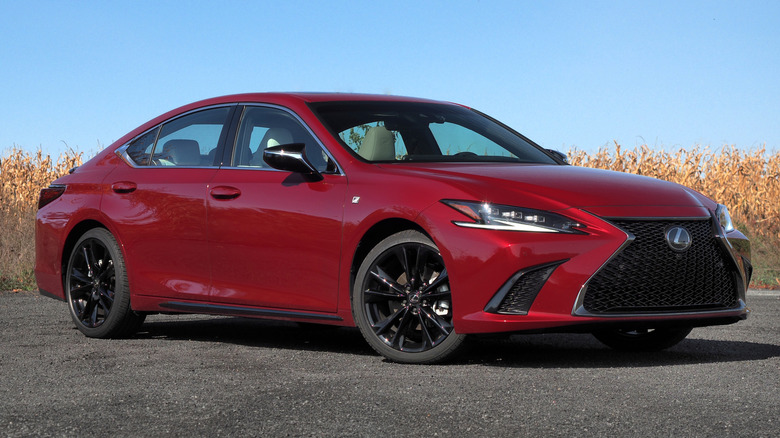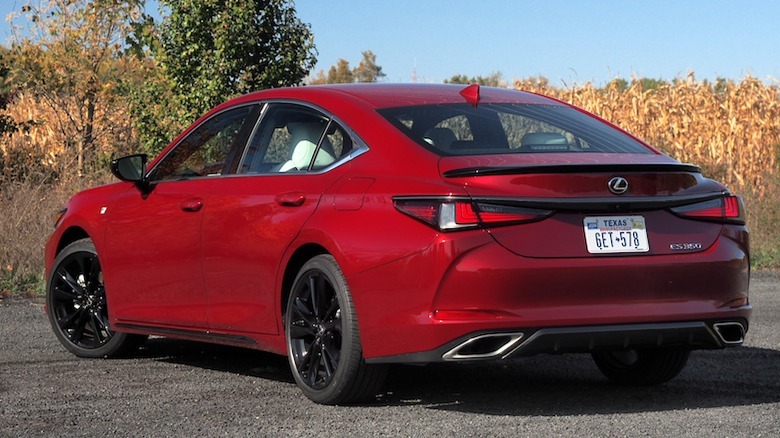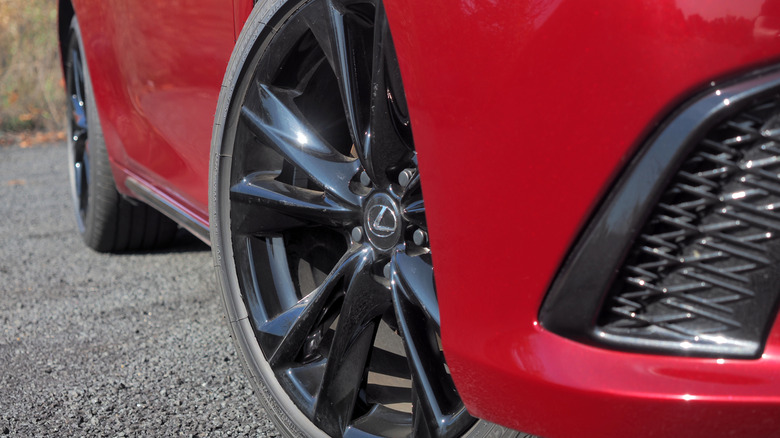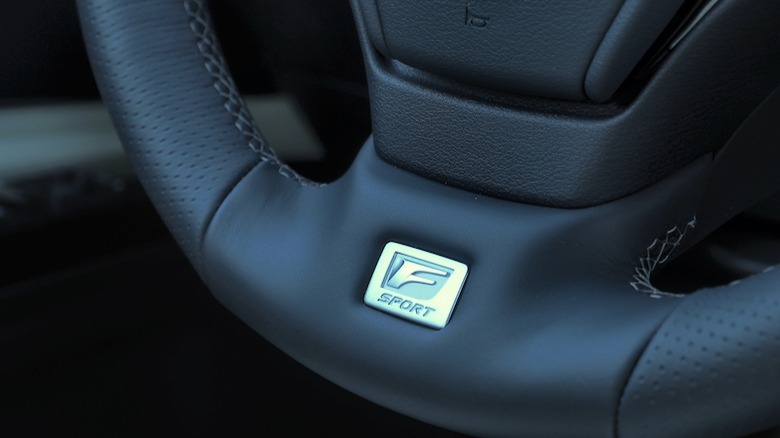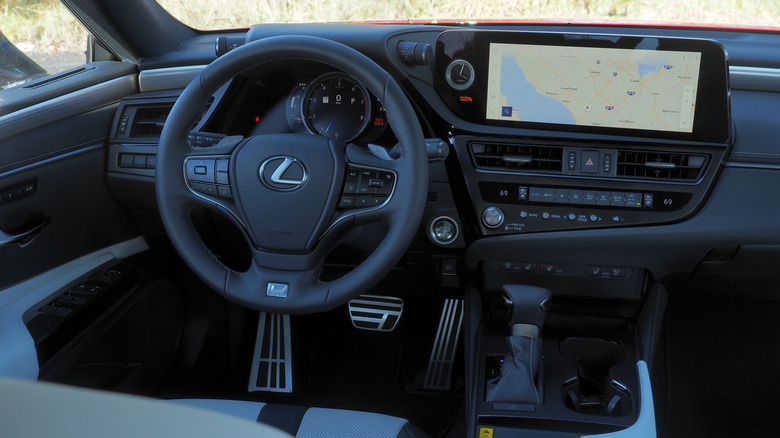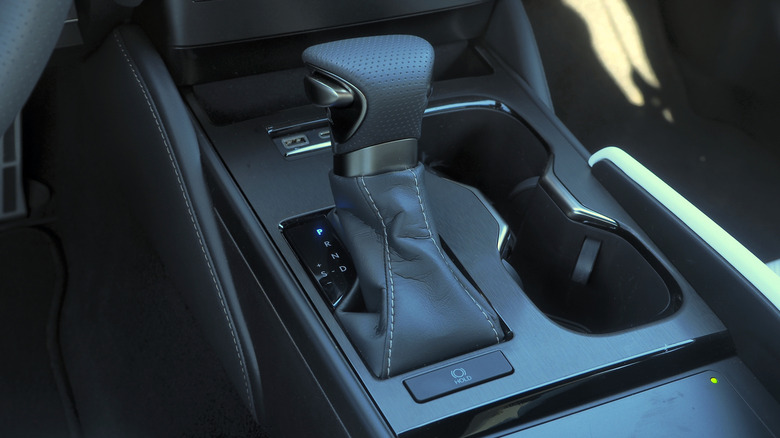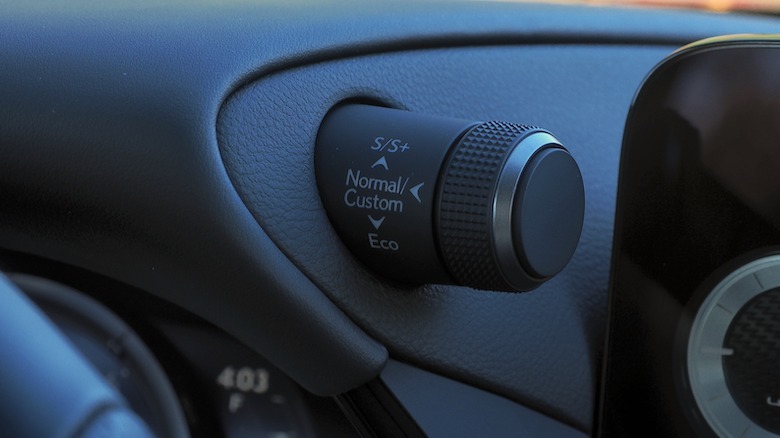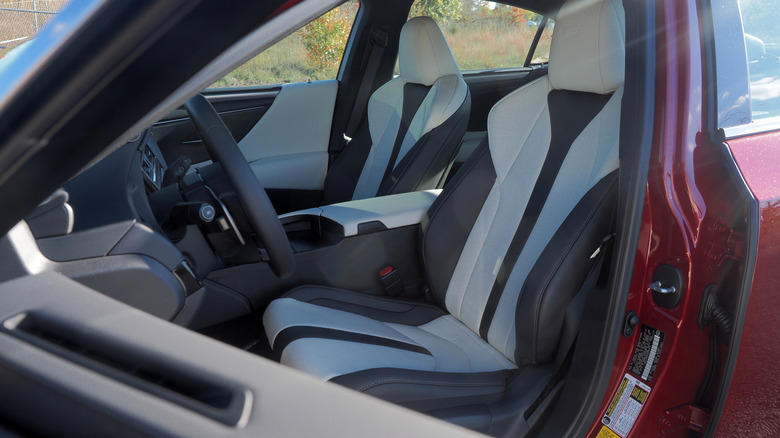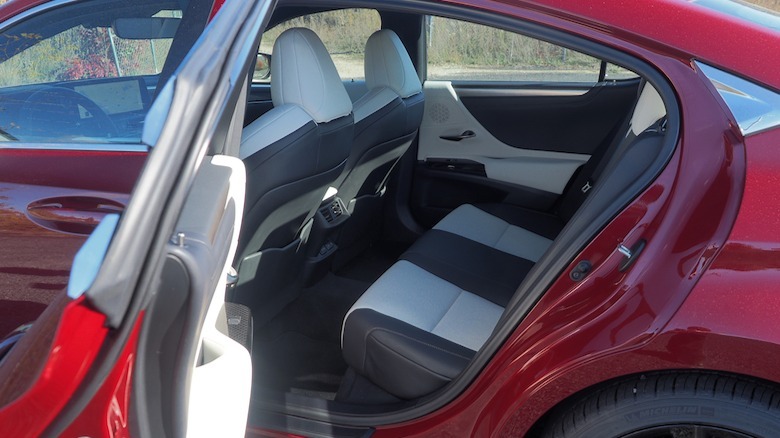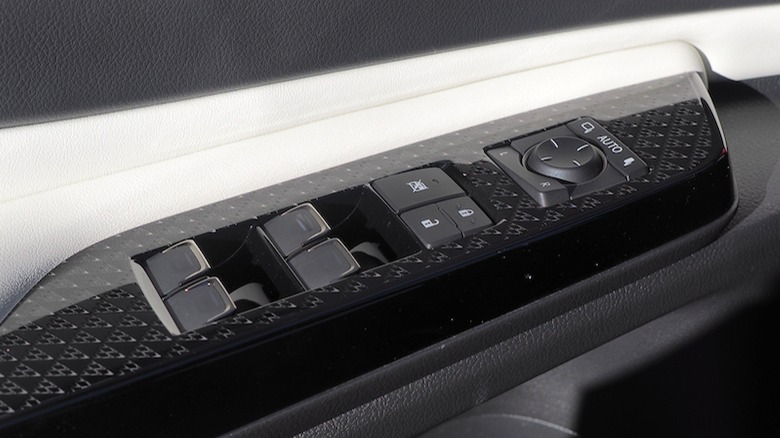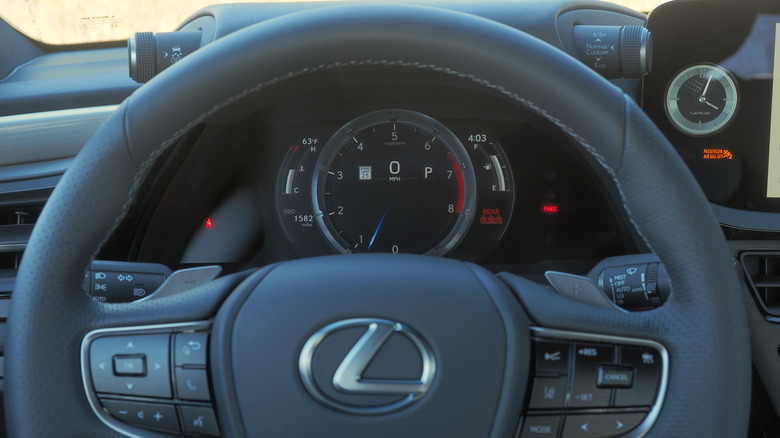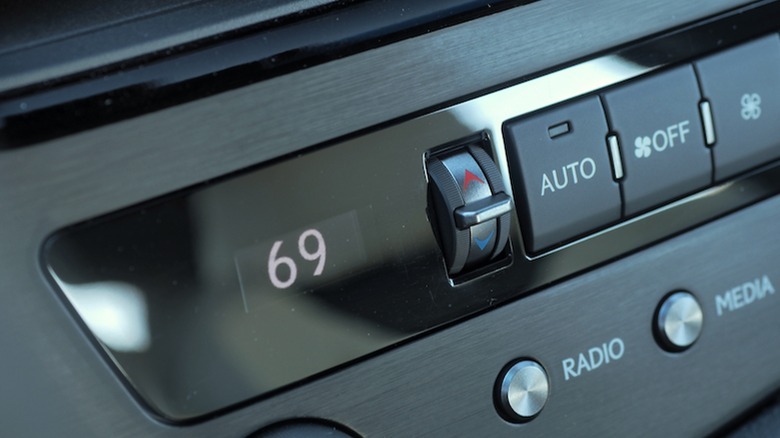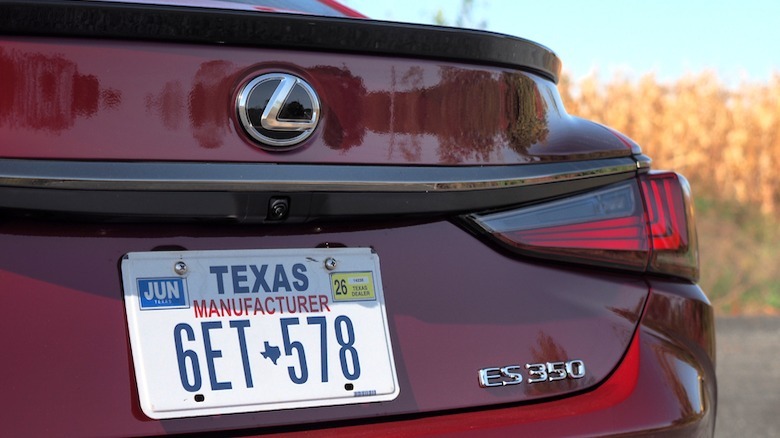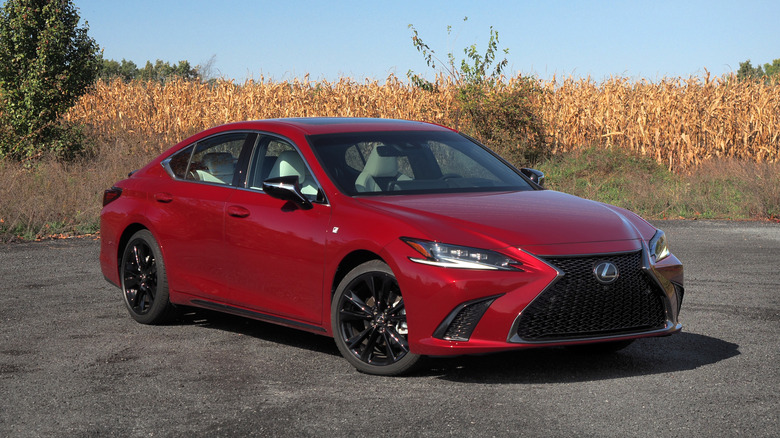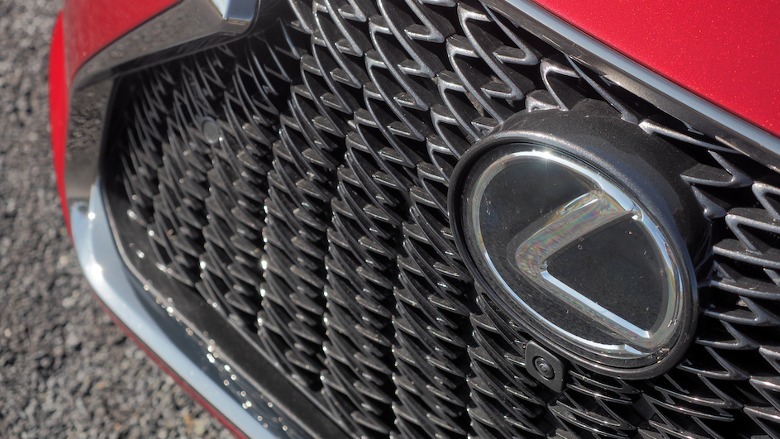2025 Lexus ES Review: Old School Luxury Needs A Rethink Not A Redesign
- Comfortable ride
- Recent infotainment upgrade is a big improvement
- Spacious rear cabin
- Can’t have AWD with the V6 engine
- Dynamically dull
- Base trims feel under-equipped
It's hard to make a case for the 2025 Lexus ES as exciting. While the IS trim has the potent V8 in its IS 500 F Sport Performance flagship to add some halo, and the sizable LS trim leans into the luxury Lexus' badge has always represented, the ES sits quietly in-between. Now in its seventh generation, you'd be forgiven for forgetting it even existed.
Arguably, the people at Lexus haven't exactly kept the ES top-of-mind. The seventh-gen car went on sale in 2018, with a fairly low-key facelift in early 2021. It has the spindle grille now familiar — and a lot less visually shocking — from most Lexus models, but more important was the addition of all-wheel drive to what had, until then, been front-wheel drive only.
Where many mid-cycle refreshes pare things back to just the most popular trims, Lexus has a whopping ten for the regular ES, and a further five for the hybrid version. That includes several F Sport branded models, and unlike is the case elsewhere in Lexus' range, they're not always just an aesthetic change.
Three drivetrain choices, with some tough decisions
There are three engine options in the 2025 ES lineup. The ES 250 AWD (from $43,215 plus $1,175 destination) uses a 2.5-liter inline-four, with 203 horsepower and 184 lb-ft of torque; it's all-wheel drive as standard. For the same amount of money, however, there's the ES 350. That has a 3.5-liter V6 with 302 horsepower and 267 lb-ft of torque, but only comes in front-wheel drive.
Finally, there's the ES 300h (from $44,615 plus destination), which pairs a 2.5-liter inline-four with an electric motor. It's not a plug-in hybrid — you can't externally charge the Lexus' small onboard battery, as you can with the NX plug-in hybrid — but you do get a slight uptick in power. It musters 215 hp to the front wheels, via an electronic CVT.
No great surprise, given those numbers, where the relative performance lines up. The 2.5-liter non-hybrid will do 0-60 mph in a languid 8.6 seconds, Lexus says, while the hybrid trims that down slightly, to 8.1 seconds. The V6 is good for a 6.6 second 0-60 time, though like all drivetrains its top speed is limited to 131 mph.
The ES has no pretensions of being a sports sedan
Outright speed, then, isn't why you go for the ES. Nor is it the right choice if you want to drive on electric power alone. The hybrid ES does have an electric mode, but — like all mild hybrids — it only lasts for short distances and middling speeds.
All models use independent MacPherson front strut and trailing arm-type double-wishbone rear suspension, both with coil springs. Luxury trims add a performance damper, but it's the F Sport Handling models where things get more interesting. They have adaptive variable suspension front and rear, with active shocks.
The differences there make themselves known when you tweak the stubby drive mode knob, that protrudes from the right side of the instrument binnacle (a matching one on the opposite side handles traction control.) Pressing it in toggles between the default Normal mode and the driver-configurable Custom; twisting down chooses Eco, the ES getting even more placid in the name of frugality. Twist up once, meanwhile, for S — Lexus' Sport mode — or twice for S+ which is the ES' most aggressive setting.
Set your performance expectations appropriately
Obviously that's "aggressive" in the context of the ES's raw specs. In the 2025 ES 360 F Sport Handling you see here — complete with the $1,500 Black Line Special Edition Package — firm is a relative thing, compared to the relaxed compliance the sedan is usually dialed in for. In the default Normal mode, the midsize Lexus wafts with immemorable grace. It's a reminder why sedans might still be the reigning kings of long-distance cruising, ignoring most poor-quality road surfaces as the V6 burbled discreetly in the background.
The S and S+ modes firm things up, and the transmission holds lower gears for longer, but this is still far from a sports sedan. Honestly, the payoff from S+ mode never quite seemed worth it to me: there's nothing especially lovely, audibly, about the V6 in its higher rev range. The slightly less-full-throated S mode adds enough perkiness to be a little more engaging, but you could get away with never touching the drive mode dial and always seeing the Lexus at its best.
It's a reminder, frankly, that not everything needs to be "sporty" and, for that matter, that not every driver is looking for that in the first place. Indeed, you could argue that while the gloss black 19-inch wheels on this F Sport Handling are handsome, the 18-inch versions standard on the ES 350 Ultra Luxury better fit the bill with the comfort that comes from their extra sidewall.
Skip the base trim
Inside, Lexus' base trims are probably going to feel somewhat barebones. There's dual zone automatic climate control, a 10-speaker audio system and 8-inch touchscreen infotainment, plus wireless Apple CarPlay and Android Auto, but while a whole bunch of cheap cars will at least give you heated front seats as standard these days, Lexus puts that — along with ventilation — behind a paid option, unless you step up to the Luxury trim at least. Leather is standard on the Luxury and Ultra Luxury trims; the rest get not-unpleasant faux-hide.
A heated steering wheel is standard on all but the base spec, as is wireless phone charging. Ultra Luxury and Black Line Special Edition trims get Lexus' 12.3-inch infotainment system as standard; it's available as a $1,030 option on most other trims. The 17-speaker Mark Levinson audio system is also an option across the board, and you can have a $500 head-up display.
I'd probably skip the Black Line package: I'm not sure the gloss black trim panels fit the ES mindset. A 360-degree camera is $835, but blind spot warnings with rear cross-traffic alert is standard across the board. Select trims get park-assist, or at least offer it as an option.
No surprises inside or in the trunk
Overall, the ES's cabin feels largely solid, if not exactly modern. Lexus' switchgear has a decent heft to it, and there are plenty of physical controls despite the touchscreen handling media and navigation duties. Some of the trim pieces — like the swathes of silver — feel a touch plasticky, though most of what you'll come into contact with is fine.
Both rows get a couple of USB charging ports — in both USB-A and USB-C flavors — and space in both the front and the back is perfectly acceptable, too. While legroom in the front is about the same as in the similarly-scaled Toyota Camry, the Lexus gets over an inch more in the rear. Headroom is about the same back there, though, and the 2025 Camry has 15.1 cu-ft of trunk space, versus the ES' 13.9 cu-ft.
The Camry is an apt sedan to mention, given both it and the Lexus use the same underlying platform. For the latest 2025 Camry, though, Toyota has made hybrid the only engine option, a decision which pays dividends in fuel economy. The ES 350's V6 is rated for 22 mpg in the city, 31 mpg on the highway, and 25 mpg combined, and while achievable from behind the wheel, they're not exactly admirable.
2025 Lexus ES Verdict
Perhaps, after three and a half decades of production, it should come as no great surprise that the Lexus ES feels faintly anachronistic. Even today, in its seventh generation, it's a car which feels resolutely committed to the task of being affordable luxury, nothing more and nothing less. It's not a sports sedan nor a segment spanning crossover-coupe. It's just a pleasant means of transportation.
For some, that confidence of purpose will be a key selling point. Others, though — and not unfairly — now expect more from their vehicle. The $56,850 all-in of this Matador Red ES 350 here, for instance, would get you into a Genesis G80 2.5T AWD. While that might have a smaller engine, its 300 horsepower is only very slightly behind the Lexus, and the turbocharged Genesis has considerably more torque, at 311 lb-ft. It also, frankly, looks and feels more modern and premium inside and out.
Therein lies the Lexus' biggest challenge, and it's one we've seen play out with other sedans. As shoppers head to the SUVs in dealerships, and automakers understandably prioritize their investment on the vehicles most in demand, a traditional four-door with relatively humble aspirations is easily eclipsed. That's doubly the case when rivals are simply outdoing them on luxury for the same price tag. The 2025 ES 350 is fine, but in this car market it's hard to argue that "fine" is enough.
